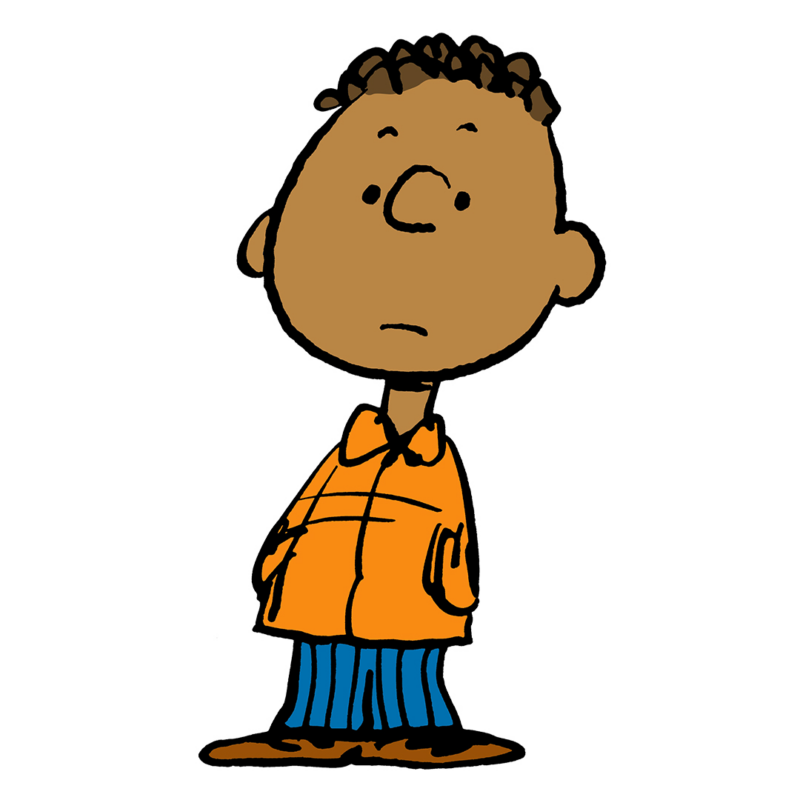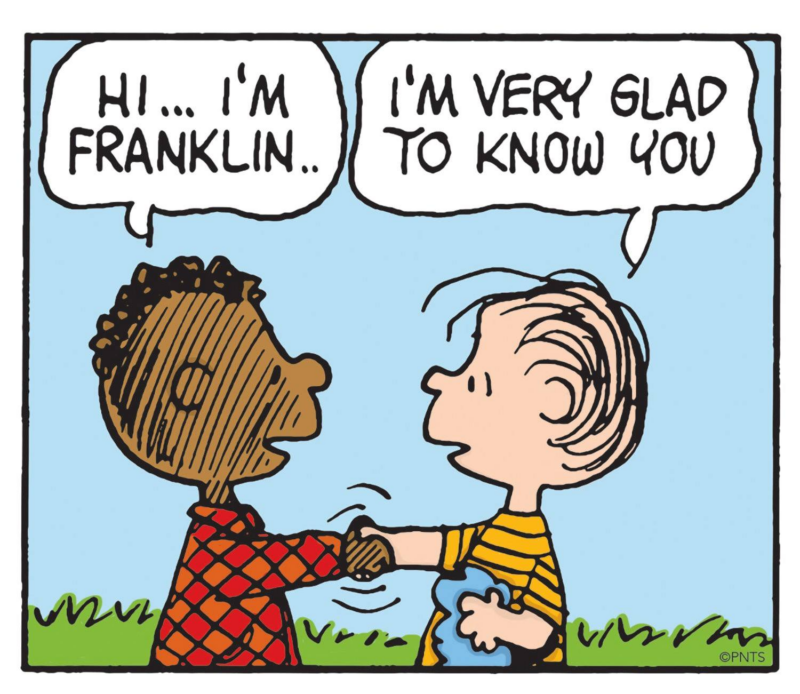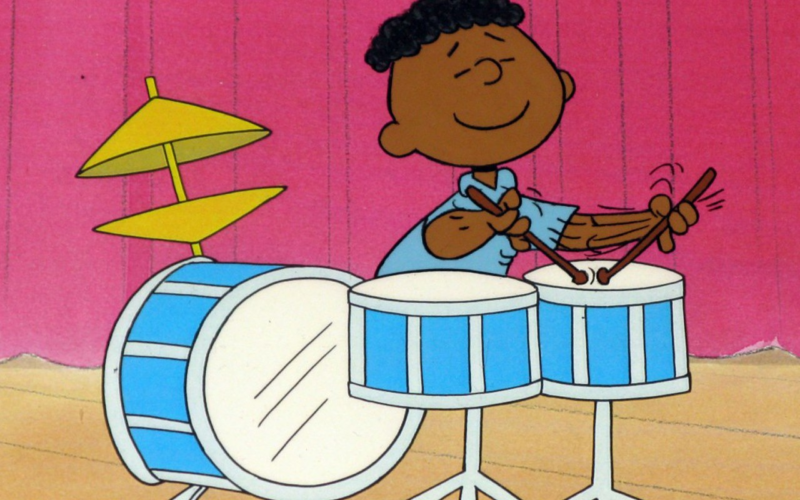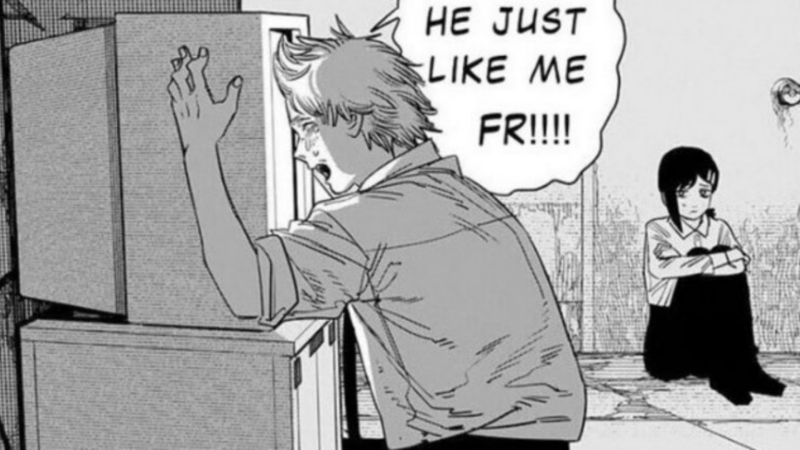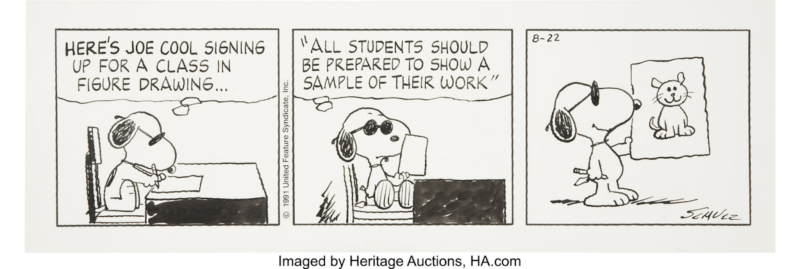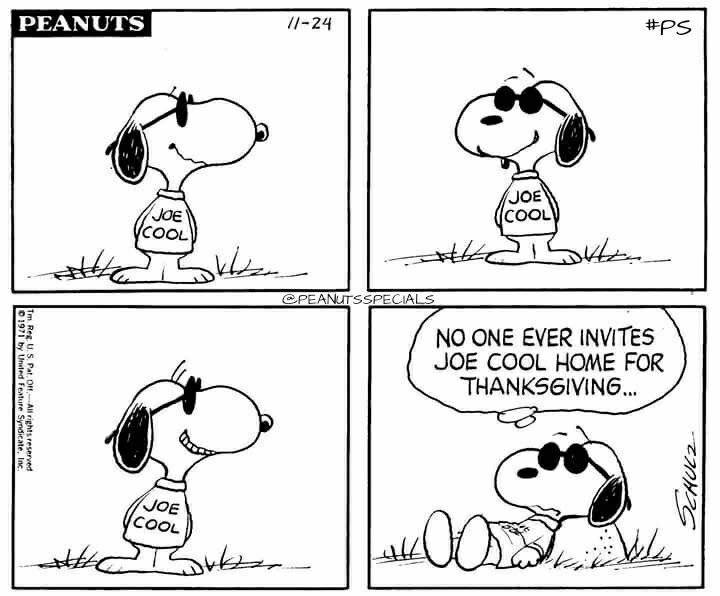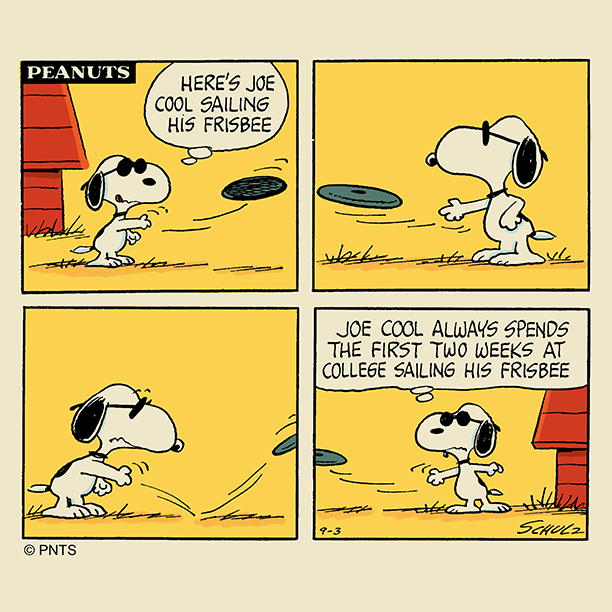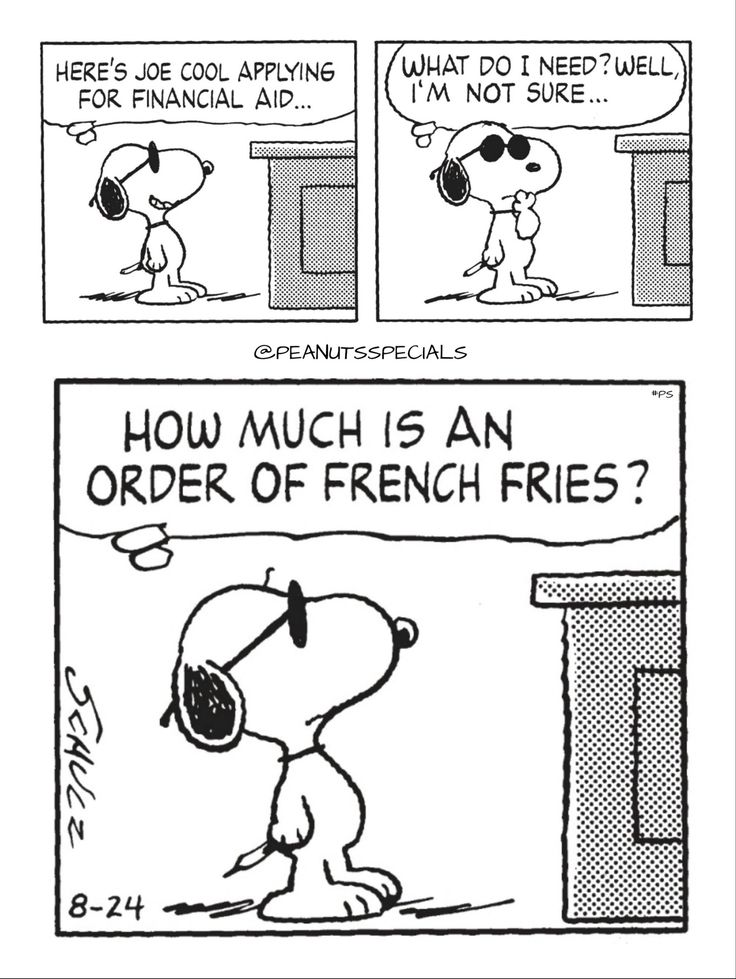
It’s Your Future, Charlie Brown! by Kayode D. '27
Charlie Brown, Friendsgiving, and the Erosion of Deep Literacy
There’s a lot I could say01 I'm sorry, y'all, I got a little carried away. This is like 10 pages of blog, and I still have more to say! about the Peanuts Comics, Christmas Music, entertainment and media as an industry, and the power of a holiday special. I could probably write three of four different blog posts about just what I say in this post, but I think it can all be best summed up with
“I love Charlie Brown.”

The year was 2010. I was excitedly awaiting the surprise Mrs. Patterson had alluded to all week while we sat on the floor of her kindergarten classroom (the class next door even came over to join us, it was that big a deal). There was a knock at the door, and she wheeled in the thing that made dreams come true: the good old roller cart TV.
She pulls out a DVD and starts up “A Charlie Brown Thanksgiving” on DVD. I had never seen this show, and was unimpressed by the vintage style of animation. By the end of the film, however, I was captivated. It was so entertaining to watch Peppermint Patty invite herself to “Chuck’s” Thanksgiving dinner, and Snoopy wrestle with a lawn chair.
It wouldn’t be until November of last year when I visited Boston for the first time that I realized how instrumental Charlie Brown was, not just for me but for television as a whole. I was on the flight back from Boston, after college tours of Harvard, MIT and Yale, fully confident I would not get accepted to any of them. Stressed out of my mind, I watched some of the free TV on the airplane. One of the options in the weirdly niche selection was “A Charlie Brown Christmas.” I’d seen it before on TV, but had forgotten just how good it was.
It had a completely different pace from shows made today. It was very wholesome, had instantly recognizable characters that needed almost no introduction, and had a thoughtful Christmas message. With 25 glorious minutes of meaningful content, a $96,000 budget, and an absolutely banger soundtrack (that I’ll talk about later), I began to appreciate Charlie Brown for the masterpiece that it was.
A Crash Course in Charlie Brown
If you’ve somehow never heard of Charlie Brown or the Peanuts comics in the last 73 years, here’s the rundown: Charles Schulz began writing a comic strip called “Li’l Folks” in 1950 that would quickly turn into Peanuts02 the name was chosen because it was a word easily identified by children at the time and featured Charlie Brown, a caricature of Schulz. Charlie Brown is an average boy that somehow seems to fail at everything. He’s nervous, lacks self confidence, often suffers, and is frequently described as a “lovable loser.”03 he just like me, fr. He’s the ultimate underdog! He leads a baseball team that once lost a game 123-0, but still he never gives up. His ragtag group of misfit friends embark on everyday adventures that readers all of the world have enjoyed and connected with. From embarking in search of The Great Pumpkin, to discovering the true meaning of Chrismas04 I could write another whole section about this too!! Charlie Brown broke the norm and rather than having a cheesy special about Christmas gifts and parties, they used their protagonist’s pessimistic nature to explore what Christmas means to different people. Wild for television at the time. , Peanuts has impacted people all over the world and changed comics, television, and Hallmark Christmas cards forever.
After appearing on an issue of Time Magazine in April, 1964, and a sponsorship from Coca-Cola, a TV special began development. Due to the small budget, short time frame, unorthodox use of child actors, and lack of any laugh tracks, the special was expected to be a flop. The special turned out to be a phenomenal success, being a seasonal television hit every year until 2022, when it became exclusively available on Apple TV.
Charlie Brown would go on to have 46 TV specials over the next 58 years, and thousands of comics. On February 13th 2000, Charles Schulz died only hours before his final comic would release to announce his retirement.
The Music
Charlie Brown has an absolutely BANGER soundtrack. Made by Vince Gauraldi, the Grammy award winning soundtrack of original and classic christmas songs cemented the Charlie Brown in history (and the National Recording Registry of the Library of Congress, apparently.)
My senior year of highschool, I took a jazz ensemble class that ended up having only 6 kids in it. I played bass guitar, and due to the class size, we played a lot of small jazz combo pieces, including songs from the Charlie Brown Christmas Soundtrack.05 I’m a firm believer in Christmas music year round (which could be a blog post on its own), and the Charlie Brown Christmas Soundtrack is my go-to for a dinner with friends or working through a tough math pset I’ll never forget the Linus and Lucy bass line or my friend Sam’s crazy guitar solo on What Child is This.
Charlie Brown also has some REALLY cool musical items:
Imagine pulling up to the college halloween party dressed as Joe Cool, classic college student (explained more later). It’s a great party…but there’s no music!! Just when all hope seems lost, you whip out your Officially Licensed Peanuts x Crosley Cruiser Record Player, and your Vince Guaraldi – It’s The Great Pumpkin, Charlie Brown Record [Orange Pumpkin-Shaped Vinyl – 45rpm] and put “The Great Pumpkin Waltz” on full blast!! Instant party saver.
I do really want that Great Pumpkin record, though. Newbury comics has it, and I want it so, so, SO bad it’s not even funny.
The Erosion of Deep Literacy: What Grinds my Gears
A few months ago, when I was looking for something to read on our family bookshelf, I found a piece of Peanuts history. For whatever reason, my family had a special 50th Anniversary Hallmark collection of Christmas Peanuts comics. While reading them, I began to appreciate the Peanuts series for how great it really was. I could watch the characters grow, from their infancy in the 50s to their slightly older childhood in the early 2000s. Slowing down to read the comics put things in perspective for me; I’m so used to fast paced, dramatic entertainment, and I think I know why.
In senior English class last year, we read an essay called “The Erosion of Deep Literacy”, by Adam Garfinkle. Essentially, the essay claims that our attention span for deep reading and insight has gone down significantly with the rise of technology. Garfinkle argues that with the new generation’s adult reading habits, and the way that media speeds up and overloads our brains with information, we are prevented from sustaining attention long enough to consume deep literacy.06 This does not include decoding written symbols, writing one's name, or making lists. Deep Literacy is what happens when a reader engages with an extended piece of writing in such a way as to anticipate an author's direction and meaning, and engages what one already knows in a dialectic process with text
Reading this essay was like looking into a mirror. I saw how technology has impacted my attention span, especially since the beginning of the Covid pandemic. During quarantine, I would come up with dozens of great ideas for board games or stories– more than I could fit in 2 notebooks. Now, out of the pandemic and with significantly more screen time, I feel less creative. I know that technology is not the only factor in play, but this article opened my eyes to how impactful it was to my mind.
The article goes even deeper into what it is about technology that lowers our attention spans. “Continuous partial attention,” a phenomenon created by the multitasking nature of most social media platforms, is pervasive throughout our generation these last few years.
You need only open instagrams, tiktok, or youtube, and you can see the strategies these companies use to keep you glued to your phone. You jump from interesting topic to interesting topic, never going deeper than a shallow glance, and as a result, you are trained to expect this.
What’s more frightening, with fingerprinting,07 Fingerprinting: Aside from using cookies, websites use standard information like phone make and model, service provider, sound and screen brightness settings, etc. to create a digital “fingerprint” that they can use to track you throughout their website (or even onto different ones). There is no way to prevent this, and it allows them to always tailor their content to you personally. companies can track you across apps and there is virtually no way to stop them from keeping you glued to your phone.
When Charlie Brown was first coming out, this was not even a possibility. Readers were limited to one strip per day, and one special per year. This portioning of media created demand and appreciation of the comics, which would allow for more thoughtful interpretations and deep reading.
Now, with the rapid growth and accessibility of media outlets, I fear that we are going to a place without deep literacy and the creativity that it brings. I can barely sit still writing this; I used voice typing to draft the majority of this blog! I’m not sure how to fix this issue, but I think that drawing attention to the issue will be necessary to combat it.
I think this line from Garfinkle’s article speaks volumes about society today.
“In science fiction, the typical worry is that machines will become human-like; the more pressing problem now is that, through the thinning out of our interactions, humans are becoming machine-like.”
Highly recommend reading the article here: https://nationalaffairs.com/publications/detail/the-erosion-of-deep-literacy
~~~~~~~~~~~~~~
Franklin: THE ARMSTRONG PROJECT
Franklin might be my favorite character in all of peanuts. He’s insanely cool, the only black main character, and lives across town from Charlie Brown. I connected with Franklin a lot when I was younger, being the only black kid in every one of my classes during elementary school. It was exciting to see a black kid drawn in the stories back then, and I often drew myself with the diagonal lines that gave Franklin his skin color in the comics.
Franklin was introduced following Martin Luther King Jr’s death, at the insistence of one of Charles Schulz’s friends. The friend sent him a letter encouraging him to include an African American character, but Schulz thought it would seem condescending toward black readers. After months of persisting, Schulz finally had an idea for a comic that would introduce his new character, Franklin, into the story. But instead of being a side character, Schulz made Franklin into a permanent main member of the cast. The company Schulz worked for tried to persuade Schulz not to air the comic, but Schulz threatened to quit making Peanuts comics if the Franklin strip was not released exactly as Schulz had written it.
After Franklin and Charlie Brown spent a day playing at the beach and realizing their similarities, Charlie Brown enthusiastically invited Franklin to spend the night at his house, giving Franklin a permanent place at the Peanuts table. There are countless stories of people reading the Peanuts comics and identifying with Franklin. The integrated nature of his appearances combated the racial hostilities present in America during his debut, and his presence in the Peanuts strip helped people identify with media more.
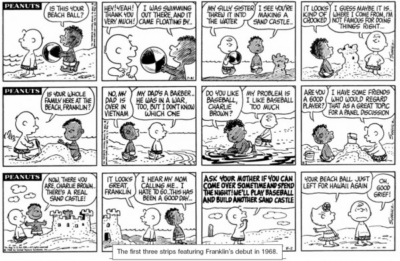
Franklin’s appearance in Charlie Brown paved the way for future black characters and comic artists, like with Robb Armstrong’s comic, Jump Start. Franklin is part of the reason that Armstrong wanted to become a comic artist, and in 1994, Franklin was given the last name Armstrong in honor of the Jump Start Comic artist.
This later inspired The Armstrong Project, a collaborative effort to support black artists and media creators at historically black colleges and universities across the US. There have been some pretty sick collaborations, like with Harlem Fashion Row and Target. More info is available at https://www.peanuts.com/the-armstrong-project, and I highly recommend checking it out.
[Franklin plays the drums and I play the drums. I really am just like him, for real.]
~~~~~~~~~~~~~~~~~~~~~
Joe cool
Joe Cool is the ultimate representation of a college student. Introduced on May 21st, 1971, Joe Cool is One of Snoopy’s many fantasy lives, not to be confused with his careers as an author, caterer, Attorney, and World War II flying ace the Red Baron.
Joe Cool is featured in many comics often incorporating his signature line “here’s Joe cool standing outside the Student Union eyeing chicks.”
While this may be a very exaggerated idea of what a college student was like in the 70s, there is a lot of relatability in it that I think a lot of college students can identify with (see below).
I strive to someday be as cool as Joe Cool. His appearance in the TV Special, “You’re Not Elected, Charlie Brown!”, also introduced the song “Joe Cool”, another absolute banger from Vince Gauraldi.
So What Now?
I could go on and share more niche Charlie Brown lore, like the story of Jose Peterson, a short-lived Mexican-Swedish batter on Peppermint Patty’s baseball team, but I digress. I’ve already said enough in this overly committed blog post. You can explore the beauty of Peanuts for yourself on Apple TV, or by googling the comics (some are very, very funny).
Last month, Peanuts released the 50th Anniversary Edition of the Charlie Brown Thanksgiving Playlist, and what better way to celebrate than sharing it this holiday season! Whether you celebrate or not, this album slaps, and has new alternate takes of the reprises and some of the songs. Give it a listen! or listen to this playlist I made of my favorite Charlie Brown songs. I’m going to 2 Friendsgiving’s
Bone Apple Teeth!
- I'm sorry, y'all, I got a little carried away. This is like 10 pages of blog, and I still have more to say! back to text ↑
- the name was chosen because it was a word easily identified by children at the time back to text ↑
- he just like me, fr. back to text ↑
- I could write another whole section about this too!! Charlie Brown broke the norm and rather than having a cheesy special about Christmas gifts and parties, they used their protagonist’s pessimistic nature to explore what Christmas means to different people. Wild for television at the time. back to text ↑
- I’m a firm believer in Christmas music year round (which could be a blog post on its own), and the Charlie Brown Christmas Soundtrack is my go-to for a dinner with friends or working through a tough math pset back to text ↑
- This does not include decoding written symbols, writing one's name, or making lists. Deep Literacy is what happens when a reader engages with an extended piece of writing in such a way as to anticipate an author's direction and meaning, and engages what one already knows in a dialectic process with text back to text ↑
- Fingerprinting: Aside from using cookies, websites use standard information like phone make and model, service provider, sound and screen brightness settings, etc. to create a digital “fingerprint” that they can use to track you throughout their website (or even onto different ones). There is no way to prevent this, and it allows them to always tailor their content to you personally. back to text ↑
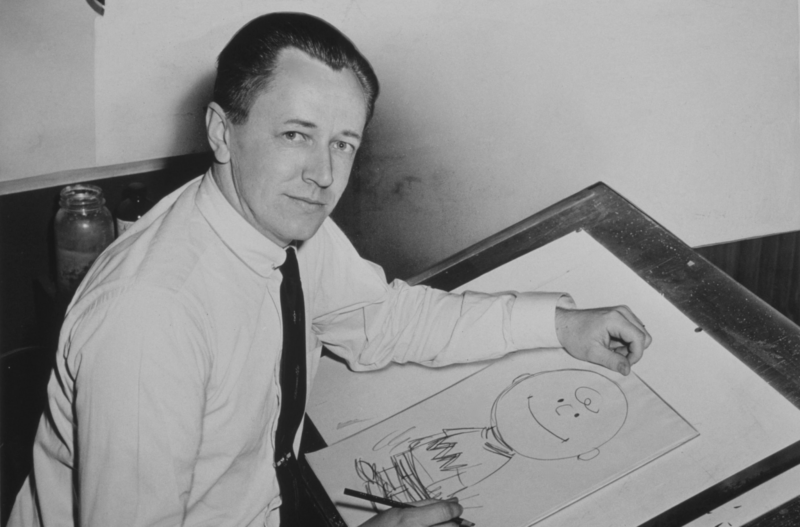
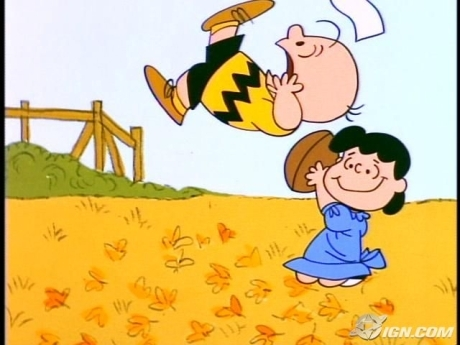
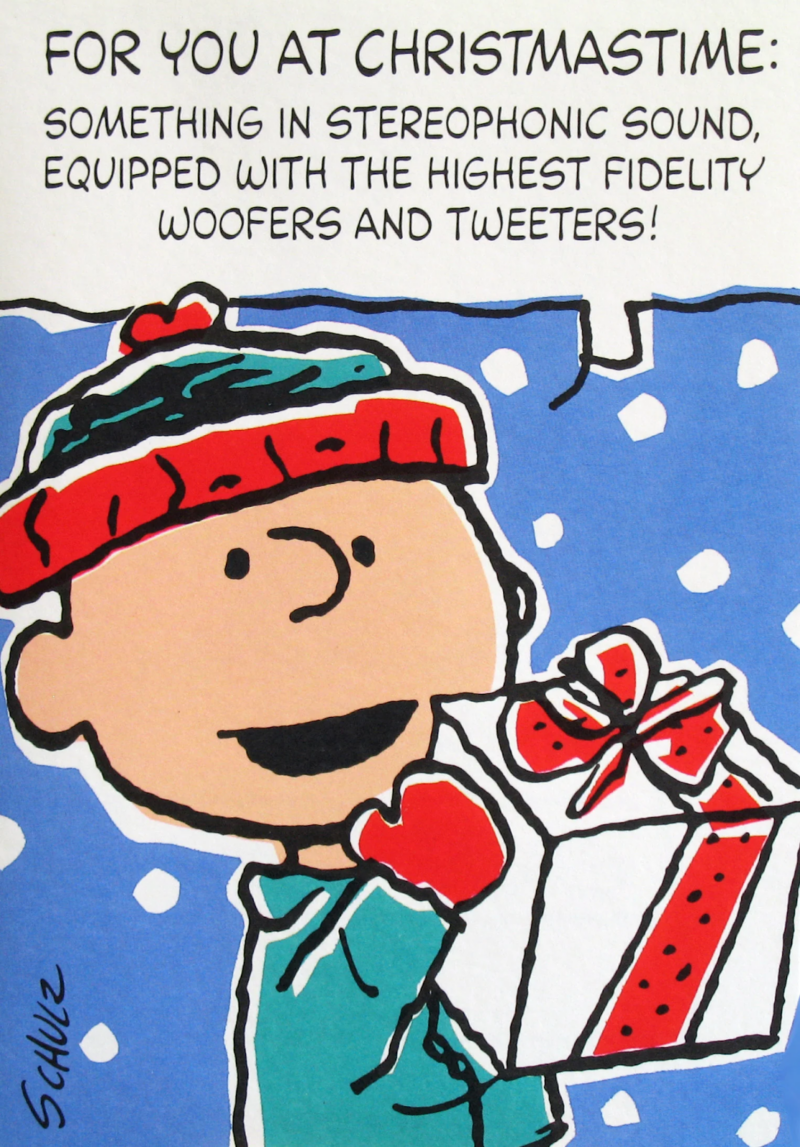
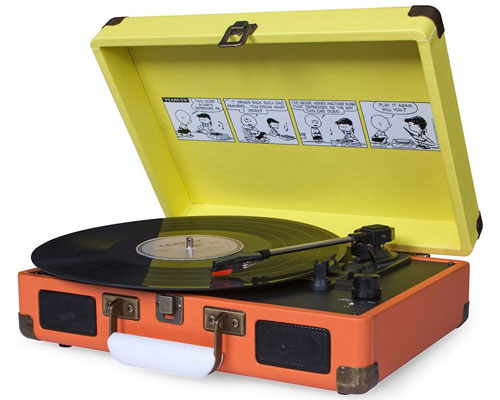
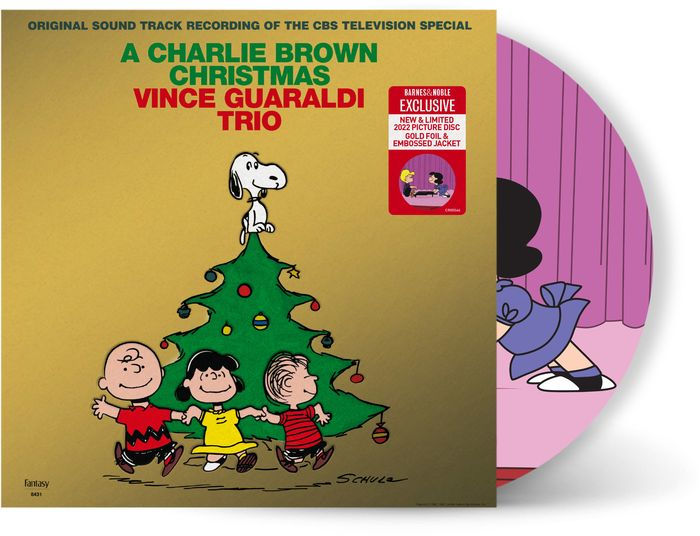
![Vince Guaraldi - It's The Great Pumpkin, Charlie Brown Record [Orange Pumpkin-Shaped Vinyl - 45rpm]](https://mitadmissions.org/wp-content/uploads/2023/11/CB-Pumpkin-Record-800x800.png)
